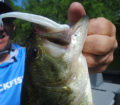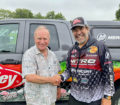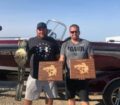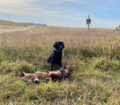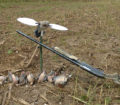By Steve Weisman
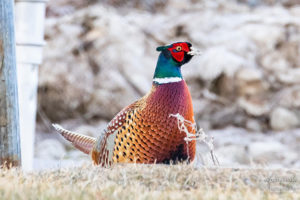
(photo by Bill Beardsley, Prairie Ridge Photography) A wily rooster pheasant emerges from the tall grass in early morning.
Each year upland game hunters wait in anticipation for the data collected during the annual DNR August roadside counts. I know that I can hardly wait to pour over the document.
As I have done over the past several years, I am going to use the 2022 Iowa August Roadside Survey compiled by Todd Bogenschutz, Upland Wildlife Research Biologist and Hallie Uhlig, Upland Wildlife Seasonal employee.
Here is a quick summary of the concept behind the count. The August roadside survey generates data from approximately 218, 30-mile routes on ring-necked pheasants, bobwhite quail, gray partridge, cottontail rabbits, and white-tailed jackrabbits. Counts are conducted on cool mornings when the sun is shining, with heavy dew, and no wind to yield the most consistent results. Comparisons between 2021 and 2022 are based on routes that are directly comparable between years (routes with no alterations and started with good dew). Long-term trends are based on all routes completed.
Here is one thing that has never changed going back to 1962. The two factors that determine the abundance and distribution of upland game populations in Iowa are weather and habitat. If you have both good weather and good habitat, Iowa hunters can look for good populations of upland wildlife, but if one of these two factors is bad, then the numbers begin to drop. If you have both negative weather conditions and significant losses of habitat, the populations plummet!
One thing noted in the report was that many of the participating staff found that drought across much of Iowa in early August negatively affected the amount of dew and as report notes, “Many staff reported they felt the survey did not capture the birds they’ve been seeing, likely related to lack of good dew during the survey on many routes”
A statewide look: similar to 2021
Bogenschultz made this statement in a recent DNR release. “If hunters enjoyed last year, they should enjoy this year. Pheasant hunting will again be good for most of the state, with the best hunting being north of Hwy. 30.”
Overall, pheasant hunters in the Hawkeye state should expect pheasant numbers very similar to 2021.
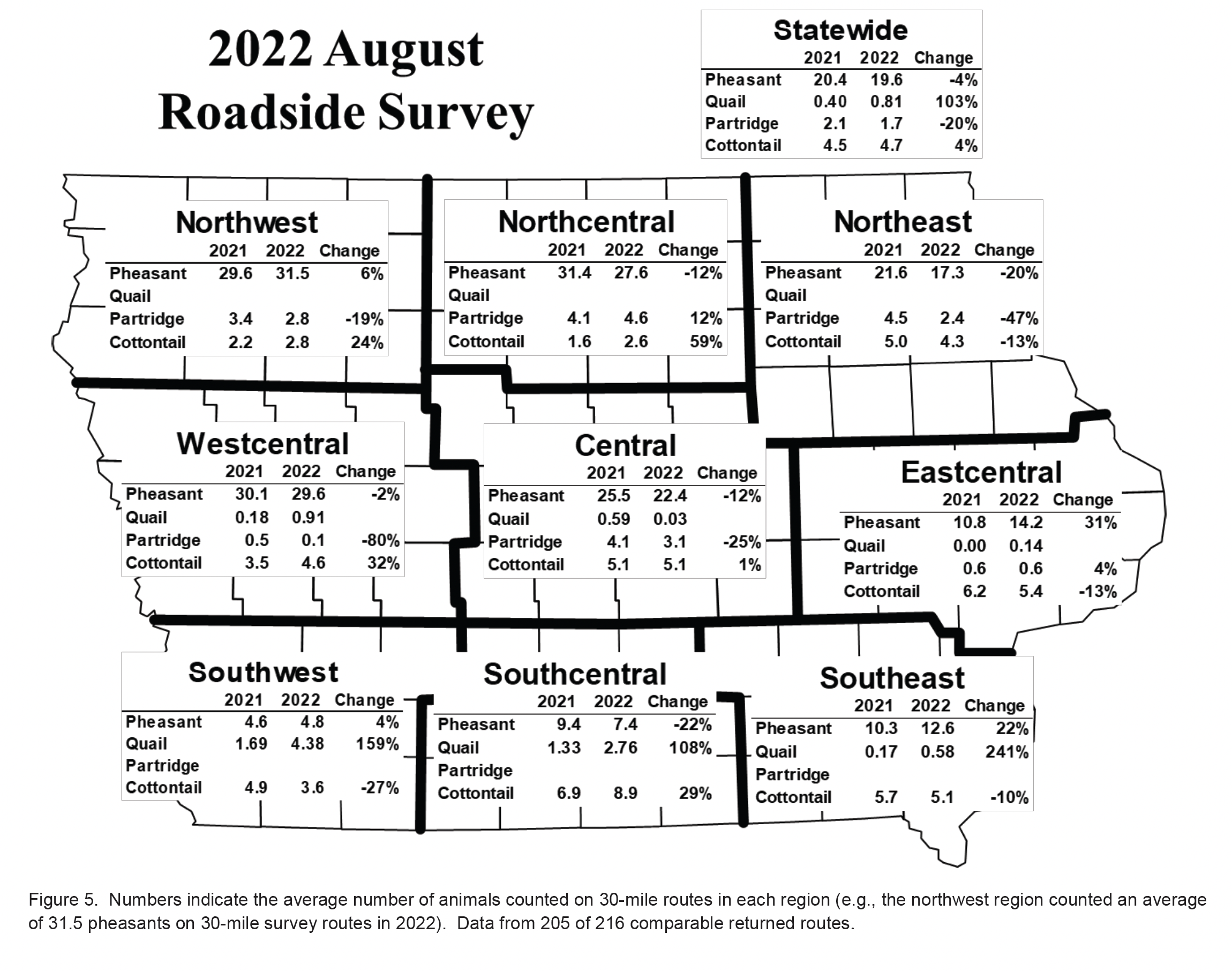
The NW, NC, WC, and C regions show the best overall densities, however hunters in the EC and SE regions should see more birds compared to a year ago. Three (NW, NC, WC) of the 9 survey regions reported pheasant averages of about 30 birds per route and should offer excellent hunting. Pheasant hunting last fall in the Hawkeye state was very good with a harvest of 373,000 roosters, and this fall should be on par with last year. Given this year’s statewide index of approximately 20 birds per route, Iowa pheasant hunters should harvest approximately 300,000 to 400,000 roosters this fall. As of early September, Iowa was still experiencing very dry conditions across most of the state. If this pattern continues into October, Iowa could see an early crop harvest, with most fields harvested and plowed by the pheasant opener. Hunter success is usually very good on openers where most crops have been harvested. Hawkeye pheasant hunters could have another very good fall!
Based on the results of the August roadside survey, Iowa hunters can expect to harvest 300,000 to 400,000 roosters this year, which is similar to last year, when the harvest was the highest in more than a decade. “Bird harvest relies heavily on the number of hunters in the field and the past two years saw highest number of pheasant hunters since 2009, and that has translated into our increased harvests,” Bogenschutz said. “The birds are there, so the harvest totals will depend on how many hunters return.” An estimated 63,000 hunters participated in 2021, a slight increase over 2020.
Northwest results
Northwest Iowa was the area that held the largest bird count numbers in the state at 31.5 birds per route. This number is up from the 29.6 birds per route in 2021. Better counts in northwest Iowa came from Buena Vista, Clay, Dickinson, Emmet, O’Brien and Osceola counties. Again, habitat is a huge key in these counties with ample tracts of public hunting lands.
A second opportunity is the DNR’s walk-in hunting program, Iowa Habitat and Access Program (IHAP), is funded through a combination of the Farm Bill and DNR license dollars. Most IHAP sites are typically private CRP lands where the DNR has provided incentives to landowners to manage habitat for wildlife in exchange for public hunting access. Iowa DNR has over 30,000 acres in this program. For a list of IHAP sites or information about enrolling visit http://www.iowadnr.gov/ihap.
Finally, there is the Conservation Reserve Program, a program which has been extremely important for upland habitat over its 37 year history. However, as of June 2022, 1.69 million acres were enrolled across the state of Iowa, which is the lowest in program history. Of this number, 118,494 acres are expiring this fall.
The bottom line in all of this: no upland habitat = no birds. Good upland habitat = plentiful birds. It’s as simple as that!

